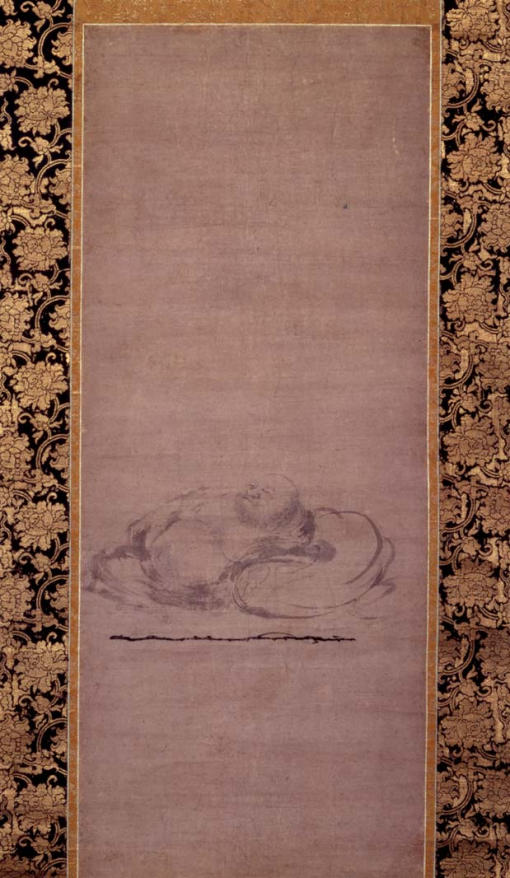Slumbering Budai
Editor's Note: This resource can be used in conjunction with the lesson Awakenings: Zen Figure Painting in Medieval Japan.
Slumbering Budai is an example of what may be called the only style unique to Zen Buddhist ink painting during the Medieval Period. It is known as “apparition painting” for its use of thin washes of ink, highlighted by a small number of specific, darker details. Overall, it is difficult to characterize a style of Zen painting, since monks and professional painters working in service of Zen drew inspiration from and utilized so many different extant styles.1
The artist who painted Slumbering Budai, Muqi (pronounced “mu-chi”), was both a Chinese Zen Buddhist monk and a painter. This was not uncommon, though Muqi stands out somewhat as a semi-professional painter. Zen Buddhist monks were all trained in an allied artform; calligraphy, and those that pursued painting did so mainly to further their own insights into Enlightenment, rather than painting explicitly for others.2 While Muqi’s work was not popular among Chinese patrons, his distinctive painting style was highly valued by Japanese monks and patrons (this trend continued from the 13th century into the 14th century).3 Even during his lifetime, Muqi’s works were collected among the Japanese ruling class and, as a result, his style was often copied by later Japanese painters.4
------------------------
1 Shimizu , Yoshiaki. “Zen art?” in Zen in China, Japan, East Asian art : papers of the International Symposium on Zen, Zurich University, 16.-18.11.1982. Helmut Brinker (ed.). New York: Peter Lang, 198D, p.91.
2 Colcutt, Martin. “’Zen Art’ in a Monastic Context: Zen and the Arts in Medieval Kench!ji,” in Awakenings: Zen Figure Painting in Medieval Japan, p.20.
3 Lippit, p.1D.
4 Shimizu, Yoshiaki and Wheelwright, Carolyn (eds.). Japanese Ink Paintings from American Collections. Princeton: Princeton University Press, 1956, pp. 43e45.
Slumbering Budai. Attributed to Muqi (act. mid- to late 13th c.); seal: “Zen’a.” Chinese, Southern Song dynasty (1127–1279), 13th c. Hanging scroll, ink on paper; 77.1 x 30.9 cm.
Kyoto National Museum. Courtesy of Agency for Cultural Affairs of Japan.


